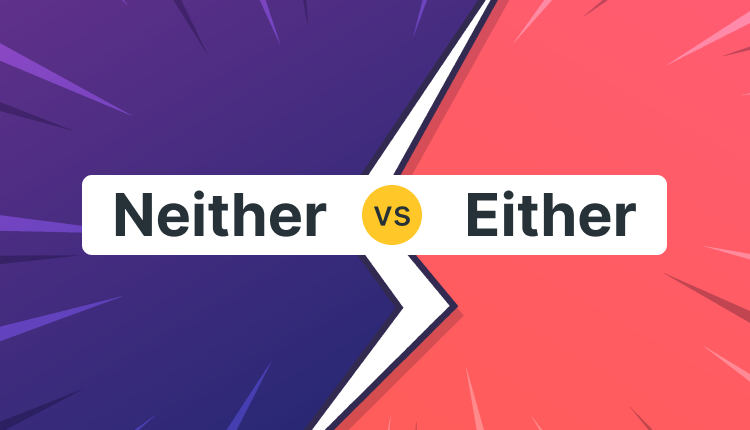In the intricate web of English grammar, words like “either” and “neither” often cause confusion. Their subtle distinctions can trip up even the most seasoned writers and speakers.
Understanding when and how to use these terms correctly is crucial for effective communication. In this guide, we’ll delve into the definitions, usage, and examples of “either” and “neither,” along with a handy tip for remembering the difference.
Definitions
Either: This word is used to refer to one of two items or possibilities. It implies a choice between two alternatives. For example, “You can either have coffee or tea.”
Neither: On the other hand, “neither” is used to indicate not one nor the other of two things or people. It suggests exclusion from a set of alternatives. For instance, “Neither option appeals to me.”
When to Use Either and Neither
Knowing when to use “either” and “neither” is essential for clear communication. These terms are versatile and can function as adverbs, conjunctions, determiners, or pronouns, each with its specific usage.
As an adverb
- Either: Indicates similarity or linkage between options. For instance, “I don’t enjoy spicy food either,” suggests agreement with someone else’s dislike of spicy food.
- Neither: Precedes the first of two choices to indicate their negation. An example could be, “We can neither confirm nor deny the rumors,” expressing an inability to affirm or refute the gossip.
As a Conjunction
- Either: Accompanies “or” to present alternatives. You might say, “You can either watch a movie or go for a walk,” offering a choice between two activities.
- Neither: Paired with “nor” to negate multiple options simultaneously. For example, “Neither the cat nor the dog found the missing toy,” indicating that both pets failed to locate it.
As a Determiner
- Either: Denotes selection from two options. For instance, “You can take either road to reach the destination,” implying a choice between two possible routes.
- Neither: Emphasizes the exclusion of both options. A sentence could be, “Neither option meets our requirements,” indicating dissatisfaction with both choices.
As a Pronoun
- Either: Represents one of two choices or a positive outcome. An example could be, “You can choose either book from the shelf,” offering a selection between two books.
- Neither: Indicates the rejection of both options or a negative outcome. For example, “Neither candidate received enough votes to win the election,” indicating the absence of a majority for either contender.
Tips for Distinguishing ‘Either’ and ‘Neither’
Focus on the initial sounds of each word to differentiate between them. “Either” starts with the letter “E,” which can be associated with “each” or “every,” implying a selection from two or more options.
“Neither” starts with the letter “N,” which can be linked to “none” or “not,” indicating the exclusion or negation of options. By paying attention to the sounds at the beginning of each word, you can quickly recall their meanings and usage.
In conclusion, mastering the usage of “either” and “neither” is essential for clear and precise communication in English. Understanding their roles as adverbs, conjunctions, determiners, and pronouns, along with practicing with examples, can help solidify their correct usage.
Trinka AI, your trusty writing companion, is here to lend a helping hand in ensuring the accurate and consistent use of these terms in your academic endeavors.
By analyzing the context and audience of your writing, Trinka AI can offer real-time suggestions on the appropriate usage of “either” or “neither,” empowering you to maintain clarity and coherence in your research papers, essays, and scholarly articles.
Elevate your writing prowess with the intelligence of Trinka AI. Let this invaluable assistant guide you through the intricacies of grammar and syntax, ensuring your academic work shines with precision and professionalism.

